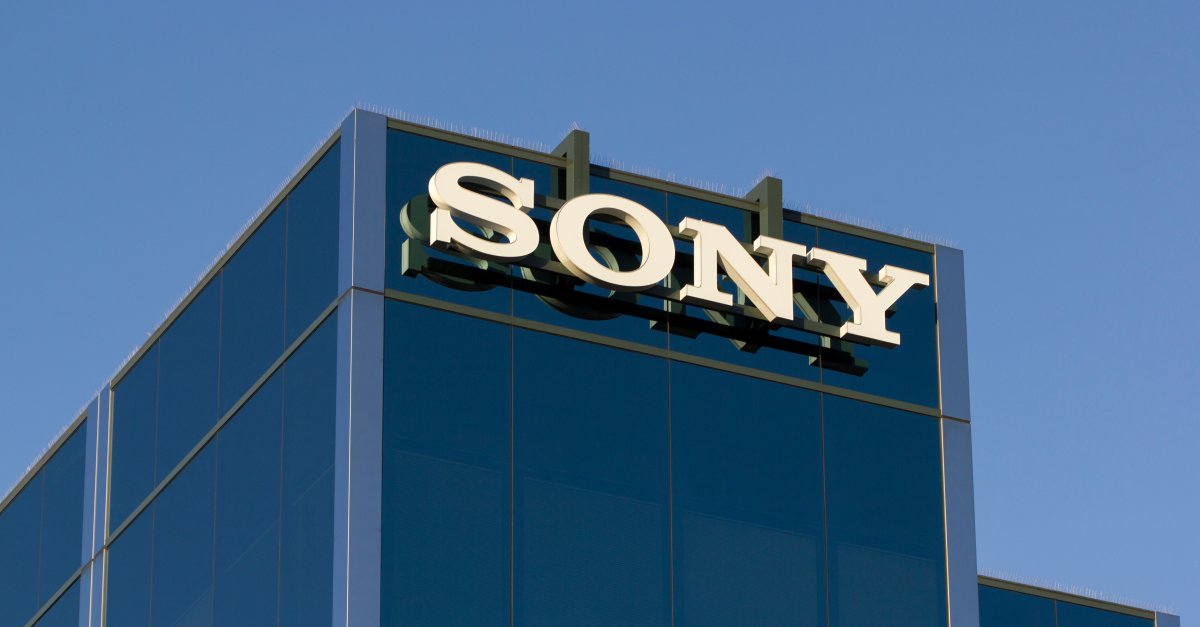Home>Finance>In What Ways Does The Capital Structure Theory Apply To Netflix?


Finance
In What Ways Does The Capital Structure Theory Apply To Netflix?
Modified: December 30, 2023
Explore how the capital structure theory applies to Netflix, a leading finance-driven company, and discover how their financial decisions impact their overall strategy and growth.
(Many of the links in this article redirect to a specific reviewed product. Your purchase of these products through affiliate links helps to generate commission for LiveWell, at no extra cost. Learn more)
Table of Contents
- Introduction
- Overview of Capital Structure Theory
- The Importance of Capital Structure for Companies
- Understanding Netflix’s Capital Structure
- Debt Financing at Netflix
- Equity Financing at Netflix
- Impact of Capital Structure on Netflix’s Performance
- Factors Influencing Netflix’s Capital Structure Decisions
- Comparison of Netflix’s Capital Structure with Industry Peers
- Conclusion
Introduction
When it comes to the world of finance, one concept that holds significant importance for companies is capital structure. The capital structure of a company refers to the way in which it finances its operations through a combination of debt and equity. In simple terms, it is the mix of debt and equity that determines how a company funds its growth and operations.
Understanding capital structure theory is crucial for companies as it helps them make informed decisions about how to finance their activities. It also plays a vital role in determining a company’s risk profile and cost of capital. In this article, we will explore how capital structure theory applies to Netflix, one of the leading players in the entertainment industry.
Netflix has transformed the way we consume entertainment, revolutionizing the streaming industry. As a company that heavily relies on technology and content creation, it is essential for Netflix to carefully manage its capital structure to support its growth and stay competitive in the ever-changing market.
Throughout this article, we will delve into the different aspects of Netflix’s capital structure, including its debt and equity financing, the impact of its capital structure decisions on its performance, and the factors influencing these decisions. Additionally, we will compare Netflix’s capital structure with that of its industry peers to gain a clearer understanding of its standing within the industry.
So, let’s dive into the world of capital structure and explore how this theory applies to Netflix!
Overview of Capital Structure Theory
Capital structure theory is a cornerstone of corporate finance and focuses on how companies allocate and manage their financial resources. It aims to determine the optimal mix of debt and equity financing that maximizes a company’s value and minimizes its cost of capital.
According to the Modigliani-Miller theorem, in a perfect market with no taxes or other distortions, the value of a firm is independent of its capital structure. However, in the real world, factors such as taxes, bankruptcy costs, and agency issues influence a company’s capital structure decisions.
There are several theories and perspectives on capital structure. The trade-off theory suggests that companies must balance the benefits of debt financing, such as tax deductions on interest payments, with the costs, such as the risk of bankruptcy. The pecking order theory proposes that companies prefer internal financing, followed by debt, and then equity, based on the relative costs of each source of financing.
Another popular theory is the signaling theory, which suggests that a company’s capital structure choices can serve as signals to investors about the company’s future prospects. For example, if a company issues equity, it may indicate that the management believes the stock is overvalued, while issuing debt may signal confidence in future cash flows.
Capital structure decisions have significant implications for a company. If a company relies heavily on debt financing, it may benefit from tax shields and lower cost of capital, but it also faces higher bankruptcy risk. On the other hand, if a company relies more on equity financing, it may have greater financial flexibility but could experience dilution of ownership.
To determine the optimal capital structure, companies often consider factors such as industry norms, cost of debt and equity, market conditions, growth prospects, and risk tolerance. Finding the right balance between debt and equity financing is crucial for a company to ensure its long-term sustainability and maximize shareholder value.
Now that we have a general understanding of capital structure theory, let’s explore how it applies to Netflix and its unique position in the entertainment industry.
The Importance of Capital Structure for Companies
Capital structure plays a crucial role in the financial health and strategic planning of companies. The decisions regarding the mix of debt and equity financing have a significant impact on a company’s operations, profitability, and overall value. Here are some key reasons why capital structure is important for companies:
1. Cost of capital: The capital structure of a company directly affects its cost of capital. Debt financing typically comes with lower interest rates compared to the cost of equity. By incorporating an optimal level of debt in the capital structure, companies can lower their overall cost of capital, which positively impacts profitability.
2. Risk management: Capital structure allows companies to manage their risk exposure. Too much debt can increase financial risk and the likelihood of bankruptcy, while too much equity can dilute ownership and limit financial flexibility. Striking the right balance ensures a company can effectively manage its risk and ensure long-term viability.
3. Tax advantages: Debt financing offers tax advantages, as interest payments are typically tax-deductible. This can result in lower tax liabilities and increased cash flow for the company. By utilizing debt as part of the capital structure, companies can optimize their tax position and improve overall financial performance.
4. Financial flexibility: Having an optimal capital structure provides companies with the flexibility to pursue growth opportunities. It allows them to access capital markets, raise funds, and take advantage of strategic initiatives, such as mergers and acquisitions, without significantly diluting existing shareholders.
5. Investor perception: A well-structured capital mix can influence the perception of investors and stakeholders. A balanced capital structure that aligns with industry norms and shows prudent financial decision-making can attract investors and signal stability, leading to increased confidence in the company’s ability to generate returns.
6. Long-term sustainability: A carefully managed capital structure contributes to a company’s long-term sustainability. By considering factors such as industry dynamics, growth prospects, and risk tolerance, companies can develop a capital structure that supports their strategic goals and ensures resilience in the face of market fluctuations.
In summary, capital structure plays a vital role in determining the financial health and performance of companies. It directly impacts costs, risk management, tax advantages, financial flexibility, investor perception, and long-term sustainability. Companies must carefully analyze their capital structure choices and strike the right balance to optimize their financial position and drive sustainable growth.
Understanding Netflix’s Capital Structure
In order to analyze the application of capital structure theory to Netflix, it is essential to understand the company’s current capital structure. Netflix, a prominent player in the entertainment industry, has capitalized on the global shift towards streaming services and has continually expanded its subscriber base and content library.
Netflix primarily relies on two sources of financing in its capital structure: debt and equity. Let’s take a closer look at each of these components:
Debt Financing: Netflix has utilized debt financing to fund its expansive content creation and international expansion efforts. The company has raised significant debt through various forms, including corporate bonds. This approach allows Netflix to take advantage of relatively low interest rates and tax benefits associated with interest expense deductions. By accessing the debt market, Netflix can secure the necessary capital to invest in original content production, infrastructure, and global expansion while managing its cost of capital.
Equity Financing: As a publicly traded company on the stock market, Netflix has also raised capital through equity financing. This involves issuing shares of its stock to investors in exchange for capital. Equity financing provides Netflix with additional financial resources and allows investors to participate in the company’s future growth and success. It also helps maintain a balanced capital structure by reducing reliance on debt financing and diversifying the source of funds.
Netflix’s capital structure reflects a strategic approach to financing its operations and growth initiatives. By combining debt and equity financing, the company aims to optimize its cost of capital, exploit tax advantages, and maintain financial flexibility. As the company continues to expand its global footprint, its capital structure choices will play a crucial role in supporting its ambitious goals.
It is important to note that Netflix’s capital structure may evolve over time to reflect changing market conditions, growth strategies, and financing needs. The company must regularly assess its capital structure to ensure it remains aligned with its long-term objectives and maximizes shareholder value.
Now that we have a clear understanding of Netflix’s capital structure, let’s explore the impact of these financing decisions on the company’s performance and financial outlook.
Debt Financing at Netflix
Debt financing plays a significant role in Netflix’s capital structure, allowing the company to support its content creation, global expansion, and technology investments. By accessing the debt market, Netflix can raise substantial funds to fuel its growth while taking advantage of several key benefits offered by debt financing.
One of the primary advantages of debt financing for Netflix is the relatively low interest rates compared to the cost of equity. Netflix has been able to tap into the bond market and issue corporate bonds at attractive rates, thanks to its strong market position and track record of success. This allows the company to secure long-term financing and lock in favorable terms, reducing its overall cost of capital and maximizing profitability.
Furthermore, the interest payments made by Netflix on its debt are tax-deductible. This tax shield lowers the company’s taxable income and, ultimately, its overall tax liability. By utilizing debt financing, Netflix can optimize its tax position and free up more cash flow to invest in its core operations, content acquisitions, and technology advancements.
It’s worth noting that while debt financing provides significant advantages, it also comes with risks and considerations. Netflix must carefully manage its debt levels to ensure it remains sustainable and within its ability to service. Increased debt can lead to higher interest expenses, potentially impacting profitability in the long run, especially if Netflix sees a decline in subscriber growth or faces intensified competition.
To mitigate these risks, Netflix has maintained a prudent approach to debt financing. The company closely monitors its debt-to-equity ratio and aims to strike a balance that supports its growth ambitions while managing financial risk. By carefully managing its debt levels, Netflix aims to maintain its creditworthiness and ensure its ability to access the capital markets for future borrowing needs.
Overall, debt financing has been instrumental in Netflix’s growth and global expansion. This strategy allows the company to secure the necessary capital to invest in content creation and technological advancements, ultimately driving subscriber growth and enhancing its competitive edge. By utilizing debt financing, Netflix can optimize its cost of capital, capitalize on tax advantages, and maintain financial flexibility as it continues to shape the future of streaming entertainment.
Equity Financing at Netflix
Equity financing is another key component of Netflix’s capital structure, enabling the company to raise funds by issuing shares of its stock to investors. By utilizing equity financing, Netflix can diversify its sources of funding, enhance its financial flexibility, and provide investors with an opportunity to participate in its growth and success.
One of the primary benefits of equity financing is that it does not require repayment like debt financing. When Netflix raises funds through equity issuance, it grants ownership interests to investors in exchange for their capital. This influx of equity capital allows the company to strengthen its balance sheet and invest in various initiatives, including content production, technology innovation, and international expansion.
Equity financing provides Netflix with additional financial resources, which are crucial for a company operating in a rapidly evolving industry. The funds raised through equity issuance can be used to support long-term growth strategies, such as acquiring content rights, developing new technologies, and building infrastructure to meet the increasing demand for streaming services.
Furthermore, equity financing allows Netflix to leverage the expertise and network of its shareholders. Along with providing capital, equity investors often bring valuable industry knowledge and connections that can support the company’s strategic initiatives. This access to a network of experienced individuals can provide Netflix with competitive advantages and facilitate partnerships, content collaborations, and other growth opportunities.
However, it is important to note that equity financing comes with some considerations. By issuing new shares, Netflix dilutes the ownership stake of existing shareholders, including institutional investors, executives, and individual investors. This dilution is a trade-off for the capital infusion obtained through equity financing.
Despite the dilution, equity financing allows Netflix to maintain a healthy balance between debt and equity in its capital structure. By combining equity financing with debt financing, the company can optimize its financial position and ensure flexibility in capital market access.
Overall, equity financing plays a pivotal role in Netflix’s capital structure by providing the company with the necessary funds and financial flexibility to pursue its growth strategies. By attracting investors and leveraging their expertise and capital, Netflix can continue to innovate and evolve in the dynamic world of streaming entertainment.
Impact of Capital Structure on Netflix’s Performance
The capital structure of Netflix, consisting of both debt and equity financing, has a significant impact on the company’s performance and financial outlook. These financing decisions influence various aspects of Netflix’s operations, profitability, and growth potential.
1. Cost of Capital: The capital structure of Netflix determines its cost of capital, which is the required return for investors. By maintaining an optimal mix of debt and equity, Netflix can minimize its overall cost of capital. This allows the company to allocate its resources efficiently, invest in content creation, and pursue international expansion while maximizing profitability.
2. Financial Flexibility: A well-structured capital mix provides Netflix with financial flexibility. By balancing debt and equity financing, the company can access capital markets and raise funds when needed. This flexibility enables Netflix to seize growth opportunities, make strategic acquisitions, and invest in new technologies, ensuring long-term sustainability and competitiveness in the streaming industry.
3. Risk Management: The capital structure influences the risk profile of Netflix. Higher levels of debt increase financial risk, as the company is obliged to make interest payments and repay principal amounts. However, leveraging debt can also provide tax advantages and cost savings. By carefully managing its debt levels, Netflix can balance risk and reward, ensuring it can fulfill its financial obligations while mitigating the potential downsides of excessive debt.
4. Investor Perception: The capital structure is closely scrutinized by investors and stakeholders. A well-structured capital mix that aligns with industry norms and reflects prudent financial decision-making enhances investor confidence in Netflix’s ability to generate returns. This perception can positively impact Netflix’s stock price and attract more investors, potentially providing the company with additional capital resources for growth and operations.
5. Growth and Content Investment: Netflix’s capital structure significantly influences its ability to invest in content creation and expand its library. Having access to both debt and equity financing allows the company to allocate capital towards producing high-quality original content, securing content licensing agreements, and enhancing user experience. This investment in content drives subscriber growth, customer retention, and revenue expansion.
6. Regulatory Compliance: The capital structure choices of Netflix also influence its compliance with regulatory requirements. Debt financing, in particular, comes with certain obligations and covenants that must be fulfilled. By managing its capital structure effectively, Netflix ensures it meets these obligations, avoids potential penalties, and maintains a strong reputation in the market.
Overall, the capital structure of Netflix has a profound impact on its performance, growth, risk management, and investor perception. By maintaining a balanced mix of debt and equity financing, Netflix can optimize its cost of capital, leverage financial flexibility, manage risk, and drive innovation and content investment, ultimately positioning the company for long-term success in the highly competitive streaming industry.
Factors Influencing Netflix’s Capital Structure Decisions
Several key factors influence the capital structure decisions of Netflix, shaping the proportion of debt and equity in its financing mix. These factors are crucial in determining the optimal capital structure that supports the company’s growth objectives while managing risk. Here are some of the major factors impacting Netflix’s capital structure decisions:
1. Growth Strategy: Netflix’s capital structure decisions are heavily influenced by its growth strategy. As a company focused on international expansion and content creation, Netflix requires significant capital to fund these initiatives. The company may choose to rely more on debt financing to quickly access the necessary funds to fuel its growth and capture market share.
2. Cash Flow and Financial Flexibility: The company’s cash flow and level of financial flexibility play a vital role in determining its capital structure. A strong cash flow position allows Netflix to service its debt obligations and reduces the risk associated with higher debt levels. Financial flexibility also enables the company to consider alternative financing options, such as equity issuance or access to credit facilities.
3. Interest Rates and Market Conditions: The prevailing interest rates and market conditions influence Netflix’s capital structure decisions. When interest rates are low, debt financing becomes attractive as it offers lower borrowing costs and potential tax advantages. Market conditions and investor sentiment also affect the availability and cost of equity capital, which may impact the company’s decisions regarding equity financing.
4. Risk Management: Netflix carefully considers risk management when determining its capital structure. The company seeks to strike a balance between debt and equity that allows it to manage financial risk effectively. Higher levels of debt increase the risk of default and bankruptcy, while relying solely on equity financing can dilute ownership and limit financial flexibility. Netflix evaluates its risk profile and selects a capital structure that aligns with its risk appetite and overall financial health.
5. Industry and Competitive Landscape: The dynamics of the streaming industry and the competitive landscape also influence Netflix’s capital structure decisions. The company may need to maintain a certain level of financial flexibility to respond to new entrants, changing consumer preferences, and technological advancements. The capital structure must support Netflix’s ability to invest in content creation, expand its library, and pursue innovative strategies in order to stay ahead in the highly competitive market.
6. Regulatory Environment: Regulatory considerations also play a role in Netflix’s capital structure decisions. Compliance with regulations related to debt financing, such as interest payment obligations, financial reporting, and debt covenants, influences the company’s capital structure choices. Netflix ensures it maintains the necessary financial resources and adheres to regulatory requirements to operate within legal frameworks and maintain a positive reputation.
By weighing these factors, Netflix can make informed capital structure decisions that align with its growth strategy, financial flexibility, risk management goals, industry dynamics, and regulatory environment. The company continuously evaluates the interplay of these factors to ensure its capital structure supports its long-term success and sustains its position as a leader in the streaming industry.
Comparison of Netflix’s Capital Structure with Industry Peers
When assessing a company’s capital structure, it is essential to compare it with its industry peers to gain valuable insights into its financial position and competitiveness. In the case of Netflix, a comparison of its capital structure with its industry peers provides a clearer understanding of its standing within the streaming and entertainment industry.
Some key metrics for comparing the capital structure of Netflix with its peers include debt-to-equity ratio, leverage ratio, and the mix of debt and equity financing. These comparisons help identify relative strengths and weaknesses and highlight differences in financial strategies and risk management approaches.
While specific comparisons may vary based on the selected peers, let’s consider a hypothetical comparison between Netflix and two of its competitors in the streaming industry:
Peer A: Peer A maintains a relatively conservative capital structure with a lower debt-to-equity ratio compared to Netflix. This indicates that Peer A relies more on equity financing and has a smaller proportion of debt in its capital mix. This cautious approach may stem from a focus on reducing financial risk and maintaining a strong balance sheet. By relying more on equity financing, Peer A avoids the potential downsides associated with high debt levels, such as increased interest expense and bankruptcy risk.
Peer B: In contrast, Peer B adopts a more aggressive capital structure with a higher debt-to-equity ratio compared to Netflix. This suggests that Peer B has taken on a higher level of debt relative to its equity to finance its operations and growth initiatives. This approach may be driven by a desire to leverage debt as a low-cost source of capital and capitalize on tax benefits associated with interest expense deductions. Peer B’s capital structure may indicate a higher risk appetite and a willingness to accept potential challenges that come with higher leverage.
Comparing Netflix’s capital structure with these industry peers reveals a distinctive position within the streaming industry. Netflix’s capital structure may fall somewhere in between the conservative approach of Peer A and the more aggressive approach of Peer B. It suggests that Netflix has carefully considered its financing choices, balancing risk and financial flexibility to support its growth strategy effectively while managing debt levels.
It is important to note that these comparisons are hypothetical and should be considered within the broader context of each company’s financial objectives, growth strategies, and market conditions. Additionally, industry peers may vary based on the specific analysis and available financial data.
By analyzing and comparing capital structures, investors and stakeholders can better understand Netflix’s financial positioning in relation to its industry peers. This allows for a more comprehensive evaluation of the company’s overall financial health, risk management practices, and growth potential.
Conclusion
Capital structure is a critical aspect of financial management for companies, and it plays a significant role in shaping their financial health and strategic decision-making. In the case of Netflix, a leading contender in the streaming and entertainment industry, capital structure theory is of utmost importance in managing its growth, risk, and financial performance.
Throughout this article, we have explored different aspects of Netflix’s capital structure, including its debt and equity financing, the impact of capital structure on its performance, and the factors influencing its capital structure decisions. Netflix utilizes a combination of debt and equity financing to support its content creation, global expansion, and technological investments.
Debt financing enables Netflix to access capital markets and secure funds at attractive interest rates, driving its growth and expanding its content library. At the same time, equity financing provides financial flexibility, allows investors to participate in the company’s growth, and supports strategic initiatives.
The capital structure choices made by Netflix are influenced by various factors, including its growth strategy, cash flow, market conditions, risk management, industry dynamics, and regulatory environment. By carefully considering these factors, Netflix can optimize its cost of capital, manage financial risk, and maintain its competitive position in the streaming industry.
In comparing Netflix’s capital structure with industry peers, we observe its unique positioning within the streaming industry. The analysis highlights the balance Netflix strikes in its capital structure decisions, considering risk appetite, financial flexibility, and growth objectives.
In conclusion, Netflix’s capital structure is a crucial component of its overall financial strategy. Through a well-managed capital mix of debt and equity financing, Netflix aims to support its ambitious growth plans, invest in content creation and technological advancements, and remain competitive in the ever-evolving streaming landscape.
As Netflix continues to expand its global presence and redefine the entertainment industry, the application of capital structure theory serves as a guiding principle in its financial decision-making, ensuring long-term sustainability, and creating value for both its shareholders and customers.














